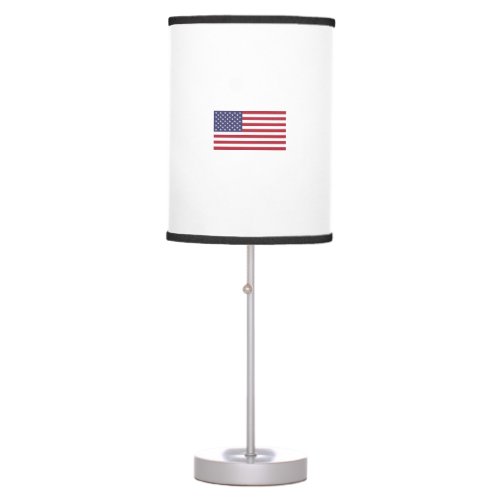Electric lamp USA style lamp



An electric lamp, commonly referred to as a light bulb, is a device that produces light through the use of electricity. Here's a detailed description covering its types, components, and functionality: ### **Components of an Electric Lamp** 1. **Base**: The bottom part of the lamp that connects to a socket, providing both mechanical support and electrical connection. 2. **Filament or Light-Emitting Element**: The part that emits light when electricity passes through it. In incandescent bulbs, this is typically a tungsten filament. In LEDs, it is a semiconductor material. 3. **Bulb**: The glass or plastic enclosure that protects the light-emitting element and sometimes contains a gas to improve performance and longevity. 4. **Gas (in some types)**: In incandescent and fluorescent lamps, the bulb may contain an inert gas like argon or a mixture of gases to enhance efficiency and lifespan. 5. **Base Contacts**: Metal components at the base that connect to the power supply. 6. **Driver or Ballast (in some types)**: Electrical components that regulate the power to the lamp, ensuring safe and efficient operation. ### **Types of Electric Lamps** 1. **Incandescent Lamps**: - **Description**: These lamps produce light by heating a tungsten filament until it glows. - **Pros**: Warm light, simple technology. - **Cons**: Low energy efficiency, short lifespan. 2. **Fluorescent Lamps**: - **Description**: These lamps use electricity to excite mercury vapor, which produces ultraviolet light that then causes a phosphor coating on the inside of the bulb to glow. - **Pros**: More energy-efficient than incandescent, longer lifespan. - **Cons**: Contains mercury, requires a ballast. 3. **Compact Fluorescent Lamps (CFLs)**: - **Description**: A smaller, more efficient version of the traditional fluorescent lamp, often in a spiral shape. - **Pros**: Energy-efficient, longer lifespan than incandescent. - **Cons**: Contains mercury, disposal concerns. 4. **Light Emitting Diode (LED) Lamps**: - **Description**: Uses semiconductors to convert electricity into light. LEDs are solid-state lighting devices. - **Pros**: Highly energy-efficient, very long lifespan, available in various colors and intensities. - **Cons**: Higher initial cost, but cost-effective over time due to energy savings. 5. **Halogen Lamps**: - **Description**: A type of incandescent lamp that contains a small amount of a halogen gas to increase efficiency and lifespan. - **Pros**: Brighter and more efficient than traditional incandescent bulbs. - **Cons**: Still less efficient than CFLs and LEDs, can get very hot. ### **Functionality** Electric lamps work on the principle of converting electrical energy into light energy. The specific mechanisms differ by type: - **Incandescent**: Electrical current heats the filament until it glows. - **Fluorescent/CFL**: Electric current passes through mercury vapor, producing UV light that causes the phosphor coating to emit visible light. - **LED**: Electrical current passes through a semiconductor, which emits photons (light) when electrons recombine with holes. ### **Applications** Electric lamps are used in a myriad of applications, including: - **Residential Lighting**: For homes, including general lighting, task lighting, and decorative lighting. - **Commercial Lighting**: For offices, retail spaces, and public buildings. - **Industrial Lighting**: In factories, warehouses, and other industrial settings. - **Street and Public Space Lighting**: Ensuring safety and visibility in outdoor public areas. - **Automotive Lighting**: In vehicles for headlights, indicators, and interior lighting. - **Specialty Lighting**: For photography, medical uses, grow lights for plants, and more. ### **Conclusion** The electric lamp is a vital component of modern life, providing reliable and versatile lighting solutions for a wide range of applications. Its evolution from incandescent to advanced LED technology reflects ongoing advancements in energy efficiency, longevity, and environmental sustainability.


